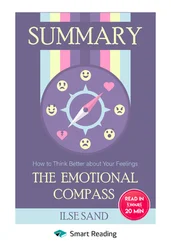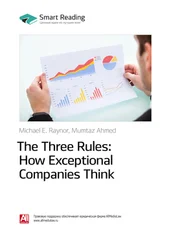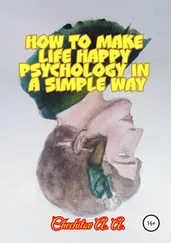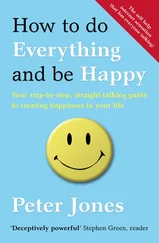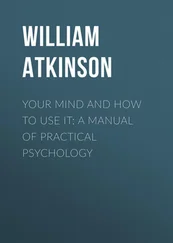What Dawes and Lilienfeld are objecting to is that the field of psychology justifies licensure requirements based on the scientific status of psychology and then uses licensure to protect the unscientific behavior of psychological practitioners. For example, one thing that a well-trained psychologist should know is that we can be reasonably confident only in aggregate predictions. By contrast, predicting the behavior of particular individuals is fraught with uncertainty (see Chapters 10 and 11) and is something no competent psychologist should attempt without the strongest of caveats, if at all. As Dawes (1994) noted,
A mental health expert who expresses a confident opinion about the probable future behavior of a single individual (for example, to engage in violent acts) is by definition incompetent, because the research has demonstrated that neither a mental health expert nor anyone else can make such a prediction with accuracy sufficient to warrant much confidence. (Professionals often state that their professional role “requires” them to make such judgments, however much they personally appreciate the uncertainty involved. No, they are not required—they volunteer.) (p. vii)
In short, the American Psychological Association has fostered an ethos surrounding clinical psychology that suggests that psychologists can be trained to acquire an “intuitive insight” into the behavior of individual people that the research evidence does not support. When pushed to defend licensure requirements as anything more than restraint of trade, however, the organization uses its scientific credentials as a weapon (one president of the APA, defending the organization from attack, said “Our scientific base is what sets us apart from the social workers, the counselors, and the Gypsies”; Dawes, 1994, p. 21). But the very methods that the field holds up to justify its scientific status have revealed that the implication that licensed psychologists have a unique “clinical insight” is false. It is such intellectual duplicity on the part of the APA that spawned Dawes’s work and that in part led to the formation of the Association for Psychological Science in the 1980s by psychologists tired of an APA that was more concerned about Blue Cross payments than with science.
Scott Lilienfeld (1998), the winner of the David Shakow Award for early career contributions to clinical psychology, reiterated all of these points in his award acceptance speech, warning that “we in clinical psychology seem to have shown surprisingly little interest in doing much about the problem of pseudoscience that has been festering in our own backyards” (p. 3). Lilienfeld (1998) listed several categories of pseudosciences that have flourished in clinical psychology during the 1990s, including unvalidated and bizarre treatments for trauma; demonstrably ineffective treatments for autism such as facilitated communication (see Chapter 6); the continued use of inadequately validated assessment instruments (e.g., many projective tests); subliminal self-help tapes; and use of highly suggestive therapeutic techniques to unearth memories of child abuse.
Lilienfeld quoted noted clinical researcher Paul Meehl (1993), “If we do not clean up our clinical act and provide our students with role models of scientific thinking, outsiders will do it for us” (p. 728). Meehl was here referring to the tendency—discussed in Chapter 11—for clinicians to imply, contrary to the empirical evidence, that they have “special” knowledge of people that goes beyond general behavioral trends that are publicly available as replicable scientific knowledge. Arguing that the clinical psychologist must, if anything, be more concerned that knowledge be empirically and publicly verified, Meehl (1993) warns that “it is absurd, as well as arrogant, to pretend that acquiring a PhD somehow immunizes me from the errors of sampling, perception, recording, retention, retrieval, and inference to which the human mind is subject” (p. 728).
Questionable practices still plague the field of clinical psychology, however. For example, the critical-incident stress debriefing has, in many localities, become a standard procedure used to treat witnesses to catastrophic and traumatic events such as bombings, shootings, combat, terrorism, and earthquakes (Groopman, 2004; McNally, Bryant, & Ehlers, 2003). The debriefing procedure involves having the client “talk about the event and ventilate their emotions, especially in the company of peers who have experienced the same incident” (McNally et al., 2003, p. 56), and its purpose is to reduce the incidence of posttraumatic stress disorders (PTSDs). The majority of debriefed clients report that the experience was helpful. Of course, no one who has read this book will find that evidence convincing (recall the discussion of placebo effects in Chapter 4). A control group (which is not given the critical-incident stress debriefing) is obviously needed. In fact, “the vast majority trauma survivors recover from initial posttrauma reactions without professional help” (McNally et al., 2003, p. 45), so it clearly needs to be demonstrated that the recovery rate is higher when the critical-incident stress debriefing is used. Properly controlled studies have shown that this is not the case (Groopman, 2004; McNally et al., 2003), yet the procedure continues to be used.
Emery, Otto, and O’Donohue (2005), in a recent review of a large body of evidence, have shown that, likewise, the clinical psychology surrounding child custody evaluations is filled with pseudoscience (Novotney, 2008). For example, they describe several assessment instruments used by clinical psychologists purportedly to assess children’s best interests in these custody disputes. After reviewing several of these instruments—for example, scales purporting to assess the perception of relationships and parental awareness skills—Emery et al. (2005) conclude that none of them have demonstrated reliability or validity. They note that “no study examining the properties of these measures has ever been published in a peer-reviewed journal—an essential criterion for science” (p. 8) and conclude that “our bottom-line evaluation of these measures is a harsh one: these measures assess ill-defined constructs, and they do so poorly, leaving no scientific justification for their use in child custody evaluations” (p. 7).
Emery et al. (2005) point out that it is not just the instruments in child custody evaluations that are often faulty, but the very concepts used by clinical psychologists. Emery et al. give as one example so-called parental alienation syndrome. It is based on the “clinical experience” of just a single person and has no validation in convergent scientific research, but it is bandied about by clinical psychologists in custody evaluations as if it were a truly scientific construct. It is likewise with some well-known measures for assessing sex offenders. Clinical psychologists continue to use them in spite of their lack of predictive validity—the measures have no demonstrated ability to differentially predict the probability of re-offense (Ewing, 2006). Similarly, the instrument most used by clinicians to predict future violence among psychopathic individuals does not actually have the accuracy that is claimed for it (Skeem, Polaschek, Patrick, & Lilienfeld, 2011; Yang, Wong, & Coid, 2010).
Things may be looking up, however. In 2002, a new journal was started: The Scientific Review of Mental Health Practice (Lilienfeld, 2002, 2007; see also, Lilienfeld et al., 2008). The journal is dedicated to research that tries to distinguish scientific from pseudoscientific treatments, and it has been endorsed by the Council for Scientific Mental Health Practice. Even more heartening are indications that at least some psychological organizations are showing the fortitude required to police clinical practice and to rid psychological practice of its ultimately destructive “anything goes” attitude. Lilienfeld and Lohr (2000) report on how the Arizona Board of Psychological Examiners sanctioned a psychologist who attempted to treat phobias with a pseudoscientific treatment that involved tapping body parts in a predetermined order. Needless to say, there are no controlled studies of the efficacy of this treatment, and the Arizona Board ordered the therapist to stop using it and put him on probation—an all too rare example of a psychological organization policing the pseudoscience that is practiced by its clinical members.
Читать дальше



